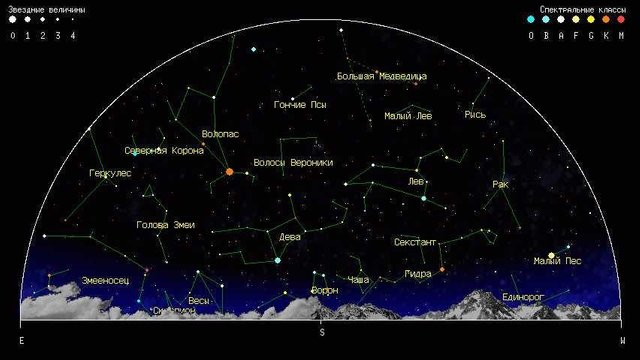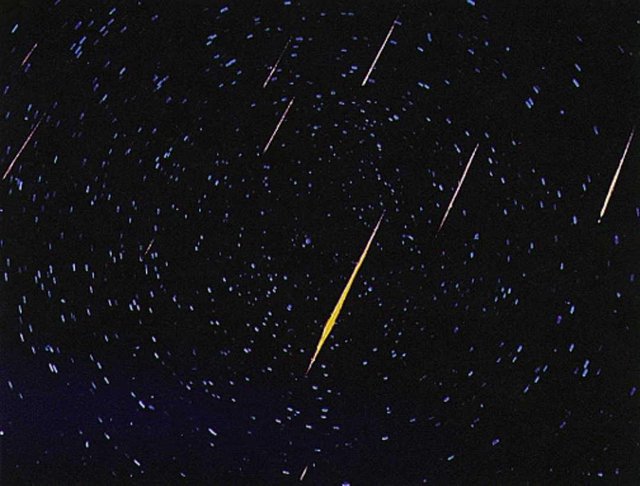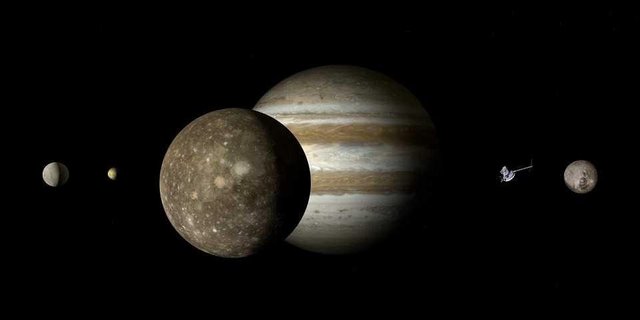The astronomical events of May
In early May, we will have the last chance to say goodbye to the incredible winter constellation - at night on the west of the horizon you can still see Capella, Aldebaran and Procyon. In the south in May, you can see the constellations Bootes and Northern Crown, and just below the constellation of the Virgin stars.
You will easily find Spica if you mentally hold the slash from the bucket handle through Arcturus. A little to the west (to the right) we will find the constellation Leo, and the Hercules constellation to the left and higher.
And after midnight in the east above the horizon a group of bright stars will rise - Deneb, Altair and Vega, forming a triangle of summer stars.

A famous astronomical event in May 2018 will be the maximum of this meteor bath -Aquarids - 5, 6 May. The flow is very wide, starting in the last decade of April and lasting almost throughout the month of May. Radiant is in the constellation Aquarius.
In the northern hemisphere conditions for observation of this bath are not the most ideal - which glows low above the horizon to the west, but the meteors are very bright and fast, dazzling white. Large flux density, about 60 to 70 meteors per hour.
So in the morning in the west it would be possible to try "catch the desire."

From the main planets in May, Jupiter was most interesting. The planet moves in the constellation Libra and on May 9 entered a confrontation with the Sun reaching -2.5m - bright, accessible for observation, and giant satellites can be seen even with binoculars. Be sure to pay attention - in the low south above the horizon - a bright greenish yellow star - This is Jupiter. In Libra, below and to the left of Speaks.
Mercury is in the constellation Pisces and Aries will begin restoring relationships with the sun and almost disappear from view. Venus after the last joint improves its extension, and it can be easily seen in the west at night in Taurus and Gemini. In the following months, the conditions for observing Venus will increase. Mars May will move in the constellation Sagittarius and Capricorn low above the horizon. Saturn will spend the entire year in the constellation Sagittarius.

The New Moon will fall on May 15, the full moon on May 29th. May 22 of the month will be held 30 minutes from Regulus (UT 01h). And an interesting part will happen on May 27th to the north of Jupiter.
The small planet 15 Einomiya on May 8 will enter a confrontation with the Sun and reach 9.8m.
And I remember today on April 21st, the Lyrida meteor shower was approaching its maximum limit. Not so dense, but very convenient for observation, the jets are located in the constellation Lear

Hi @iskandarmudaaceh please note there are a few problems with this article. Some examples are:
Terminology:
Meteor bath --> Meteor Showers
confrontation --> Conjunction
and many more.
Images:

You have not provided correct image attribution.